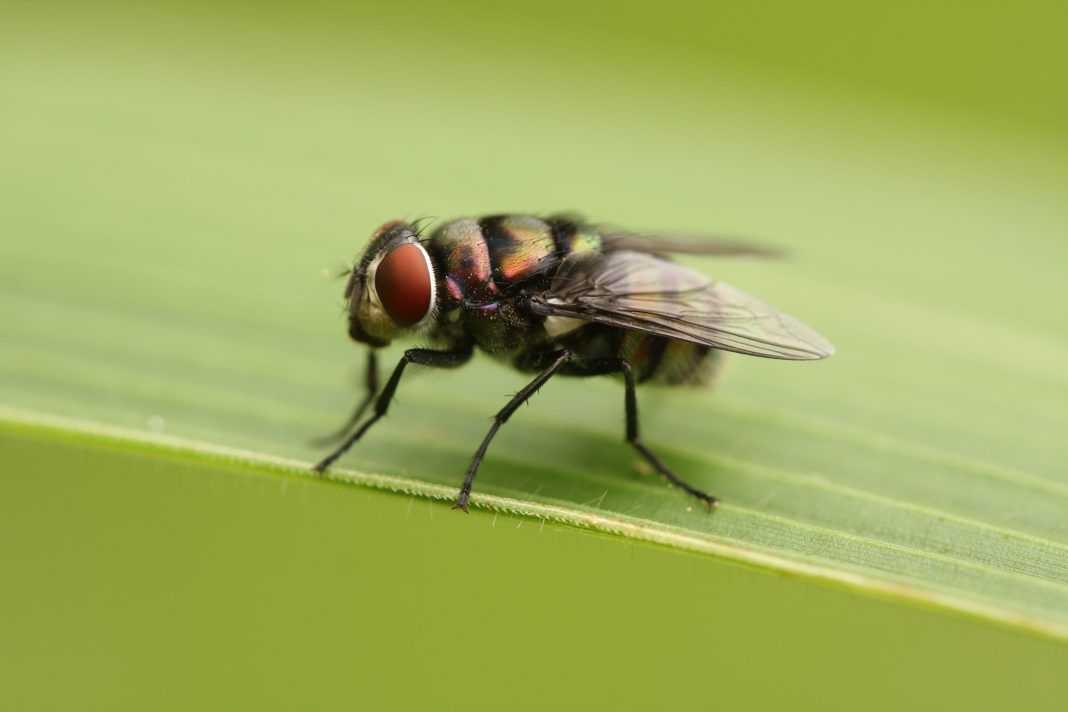Methods are lacking for controlling the spread of disease among humans and livestock in sub-Saharan Africa. Now, a new insight into how tsetse flies mate could bolster the arsenal of tools to manage the spread of disease by these insects. The insects produce volatile pheromones that control their mating behavior, according to a new study. This finding is made even more impactful because, despite more than a century of tsetse research, volatile sex pheromones had not been previously identified.
The discovery offers new insights into how the flies communicate with one another and could yield new methods for controlling their populations and the harmful diseases they carry.
This work is published in Science, in the paper, “A volatile sex attractant of tsetse flies.”
Tsetse flies transmit trypanosomes—unicellular parasites that cause trypanosomiasis in humans and animals. “African sleeping sickness is a dreadful disease that’s hard to treat. Our immune systems have a hard time clearing trypanosomes and most of the drugs we have to kill them are toxic,” said John Carlson, PhD, professor of molecular, cellular, and developmental biology at Yale University. “And nagana, which affects livestock, has had terrible economic impacts in the region.”
For decades, the primary means of controlling these diseases has been to manage the tsetse flies that spread them. The most common and effective method is using odor-baited traps that attract flies by employing odorants derived from the animals they feed on. However, because insect-derived pheromones have been successfully used in the control of a wide variety of other insects, their identification in tsetse could be useful in controlling these flies.
To identify volatile pheromones of tsetse, researchers used gas chromatography-mass spectrometry, electrophysiology, and behavioral analysis, in studies of the tsetse fly Glossina morsitans.
Through this analysis, they discovered several volatile compounds—methyl palmitoleate (MPO), methyl oleate, and methyl palmitate—that promoted rapid mating behavior in G. morsitans across experimental conditions. MPO had the strongest effects.
They also characterized a subpopulation of olfactory neurons in the flies that respond to these pheromones. The findings revealed that infection of female tsetse flies by trypanosomes alters both the pheromone profile and mating behavior of the flies and has the effect of reducing mating receptivity in females.
Specifically, in a series of experiments led by Shimaa Ebrahim, PhD, a postdoctoral fellow in Carlson’s lab, researchers found that MPO attracted male tsetse flies, caused them to stop and remain where they were for some time, and acted as an aphrodisiac. A drop of liquid containing MPO attracted male tsetse flies to knots in yarn that only resembled flies and to females of another tsetse fly species that they would not typically interact with.
“Now we’ve found this pheromone that could be used in combination with the host odors,” said Carlson. “Especially since MPO not only attracts the flies but causes them to freeze where they are.”
While animal odors have the benefit of attracting tsetse flies across large distances, they tend to fade quickly. MPO works at shorter distances but is effective for longer periods of time, Carlson added. “MPO could be one more tool in the toolbox when it comes to combatting tsetse flies and the diseases they spread,” he said.
“Insects are among the most abundant and most diverse organisms on Earth and display robust olfactory behaviors,” wrote Zainulabeuddin Syed, PhD, assistant professor, public health entomologist from the University of Kentucky in a related Perspective. “Therefore, it is not surprising that a better understanding of their sensory biology is widening possibilities to exploit their behavior against them to control disease spread.”
The team is now working with collaborators in Kenya to test whether MPO is useful in traps in the real world, not just in a lab setting.
Additionally, the researchers want to understand what causes tsetse flies infected with trypanosomes to emit an entirely different set of chemicals—something else they identified in the study—and how that affects fly communication.






